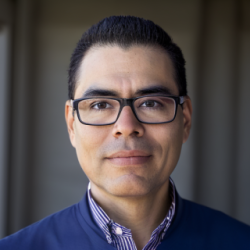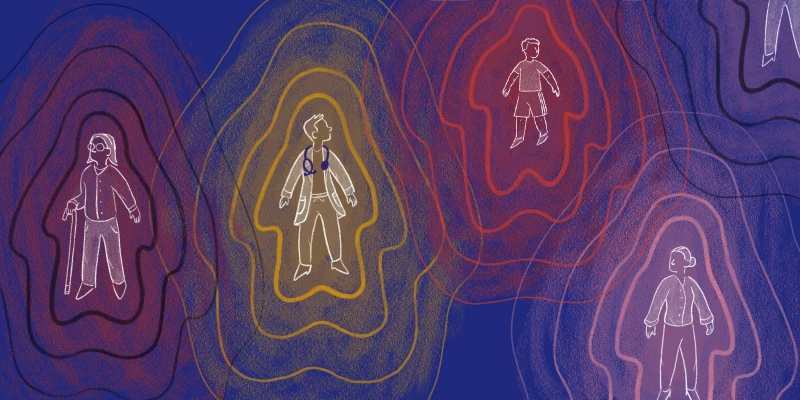Considering that the most recent therapeutic approvals for relapsed/refractory multiple myeloma (R/R MM) have included monoclonal antibodies, bispecific T cell engagers, and chimeric antigen receptor (CAR) T-cells, we are clearly entering an era of antigen-specific immunotherapeutic approaches aimed at prolonging survival. Data being presented at the 2022 American Society of Hematology Annual Meeting in New Orleans further support the incorporation of these targeted therapies described below across various lines of therapy, based on selected abstracts currently available online.
There are several early phase trial updates being presented as oral abstracts involving bispecific antibodies targeting CD3 on T cells and novel receptors expressed on myeloma plasma cells. Teclistamab, an BCMAxCD3 bispecific antibody, was recently approved for treatment of MM patients following 4 prior lines of therapy based on the Phase 1/2 MajesTEC-1 study demonstrating a 63% overall response rate (ORR) in 165 heavily pretreated patients at a median follow up of 14.1 months (Moreau, P, et al. NEJM 2022). At this year’s ASH, abstract 160 examines the combination of subcutaneous teclistamab and daratumumab with oral lenalidomide (TDR) in 32 patients who received 1-3 prior lines of therapy. Although premature, nearly 90% of patients achieved a response at a median time of only 1 month. This immunomodulatory regimen demonstrated relatively high rates of neutropenia and infection (both 75%), thus the ongoing MajesTEC-7, a randomized Phase 3 comparison of TDR vs. DR in transplant ineligible newly diagnosed MM, will be important to assess efficacy and safety of this triplet in a larger cohort.
Abstracts 158 and 159 present updates of MagnetisMM-1 and -3, which are Phase 1 studies of elranatamab, another BCMAxCD3 bispecific. In MM-1, 55 patients treated with a median of 5 prior regimens, including 24% with prior BCMA therapy, were noted to have a 64% ORR (54% in those with prior BCMA therapy) at a median follow up of 12 months. In MM-3, which enrolled BCMA therapy-naïve patients, the ORR was 61% at median follow up of 6.8 months. As with teclistimab, the rates of high grade cytokine release syndrome (CRS) were very low with elranatamab.
Abstract 157 examines talquetamab, a GPRC5DxCD3 bispecific, in the Phase 1/2 MonumenTAL-1 study of 288 patients with at least 3 prior lines of treatment. In 143 evaluable patients, ORR was 73% and median progression free survival (PFS) was 7.5 months. Again, rates of grade 3/4 CRS were low. Taken together, these bispecific studies offer substantial promise for patients with R/R MM who have received multiple lines of therapy, including prior BCMA-targeted agents. Also of interest, initial cytotoxic data of a first-in-class trispecific antibody targeting BCMAxCD38xCD3 will be presented in abstract 353.
Notwithstanding current manufacturing challenges that have limited CAR T-cell availability in MM patients, BCMA-targeting autologous CAR T-cells have produced unparalleled response rates in R/R MM. For example, the Phase 2 KarMMA study (Ide-cel: Munshi, N, et al. NEJM 2021) and Phase 1/2 CARTITUDE-1 study (Cilta-cel: Berdeja, J, et al. Lancet 2021) showed impressive ORR of 73% and 97%, respectively, in heavily pretreated R/R MM. This year at ASH, abstract 361 includes data from KarMMa-2, a Phase 2 study examining the efficacy and safety of Ide-cel in 37 MM patients enrolled to date with relapse <18 months from autologous transplant, which is much earlier than the current label for CAR T-cells for patients with ≥4 prior lines of therapy. At a median follow up of 21.5 months, the ORR was 83.8% with a complete response in 45.9% of patients and a median duration of response of 15.7 months. Severe CRS and neurotoxicity were rare; however rates of grade 3/4 neutropenia were 94.6% and 2 deaths were reported due to infection. Relatedly, a retrospective study being presented as a poster, abstract 2027, describes factors associated with poor response to Ide-cel, including prior anti-BCMA therapy, high-risk cytogenetics, and elevated ferritin at the time of lymphodepletion. Also of note, poster abstract 3354 examines a cohort of 19 MM patients with relapse <12 months from transplant in the Phase 2 CARTITUDE-2 study, which demonstrated an impressive 100% ORR at median follow up of 17.8 months, with similar adverse events as previously published.
Building on the success of current CAR T-cell constructs, additional abstracts at this year’s ASH meeting use novel approaches. A Phase 1 study of CAR T-cells targeting GPRC5D (MCARH109) was recently published (Mailankody, S, et al. NEJM 2022), and abstract 364 further describes this cohort of 17 patients at different dose levels with ORRs ranging from 80-100%. Abstract 366 will present an early Phase 1 study of a novel BCMA/CD19 dual-targeting FasTCAR-T cell construct (GC012F) as first-line therapy in 13 newly diagnosed transplant-eligible high-risk MM shortly after induction. While early, at a median follow up of only 5.3 months, impressive 100% ORR and MRD negativity rates were reported, with no high-grade CRS. Additionally, abstract 2019 presents data on allogeneic anti-BCMA CAR T-cells (ALLO-715) in the Phase 1 UNIVERSAL study of 53 patients with ≥3 prior lines of therapy. Being “off the shelf,” median time from enrollment to lymphodepletion was only 5 days (compared to the typical 3-5 week vein-to-vein time with autologous CAR T-cells), and all patients received the product per intended specifications. ORR at different dose levels ranged from 64-80%, with no reported graft-versus-host disease from the allogeneic cells. One patient had grade 3 CRS and 29% had grade 3/4 neurotoxicity. No deaths were reported. Additionally, at the poster sessions, a number of abstracts will present initial data suggesting the potency of CART NK-cell approaches to target neoplastic plasma cells (for examples, abstracts 3303, 4639, 4486). Overall, these dynamic adaptive T and NK cell therapies offer the possibility of high response rates and delayed time to progression, which ultimately must be balanced with the potential for serious, though manageable, toxicities as we aim to prolong overall survival using novel immunotherapy paradigms for the treatment of MM.
Dr. Braunstein is employed by the NYU Long Island School of Medicine. He has received Research support from Janssen, BMS and consulting fees or honorarium from Celegene/BMS, Adaptive Biotechnologies, GSK, Pfizer, ADC Therapeutics, Janssen, Abbvie, Epizyme, CTI Biopharma, and Guidepoint. He has also received support from Sanofi (content preparation) and Janssen.
Image by Jack_Aloya / Shutterstock







